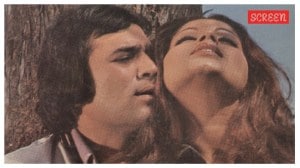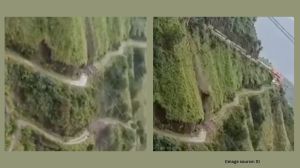Click here to follow Screen Digital on YouTube and stay updated with the latest from the world of cinema.
Ram Ram, India: The return of Ramayana, the return of the 1980s Sundays
Ramanand Sagar’s epic will be back on Doordarshan from March 28 onwards. This time we will get to see it in the morning as well as evening (9-10 am and 9-10 pm).
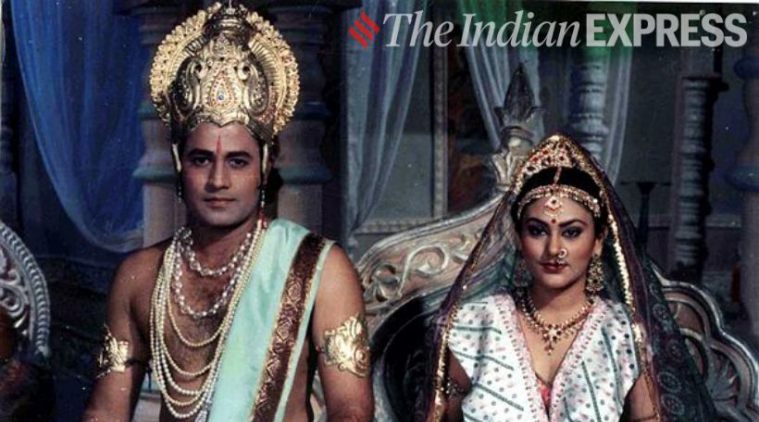 There are a number of theories as to why Ramayana was such a success.
There are a number of theories as to why Ramayana was such a success.
The morning of Saturday (March 28, 2020) is so going to remind many of Sundays in 1987. Normally bustling streets and neighbourhoods would be quiet. Electricity workers would be on the alert to restore services as soon as possible should a fault occur. And street dogs would marvel at just how human-less their world became for about an hour or so.
It was literally a divine hour. For nearly a year and a half from 1987 onwards (it started a day before Republic Day in 1987 – January 25), Sunday mornings divided India into two parts – those who watched Ramayana and those who had no access to a television. No, that’s not an exaggeration. At its peak, the serial had a viewership of almost 82 per cent as per some sources!
Ramanand Sagar’s epic will be back on Doordarshan from March 28 onwards. This time we will get to see it in the morning as well as evening (9-10 am and 9-10 pm). And the streets will be deserted once again, although more because of the nationwide lockdown rather than sheer attraction to the serial.
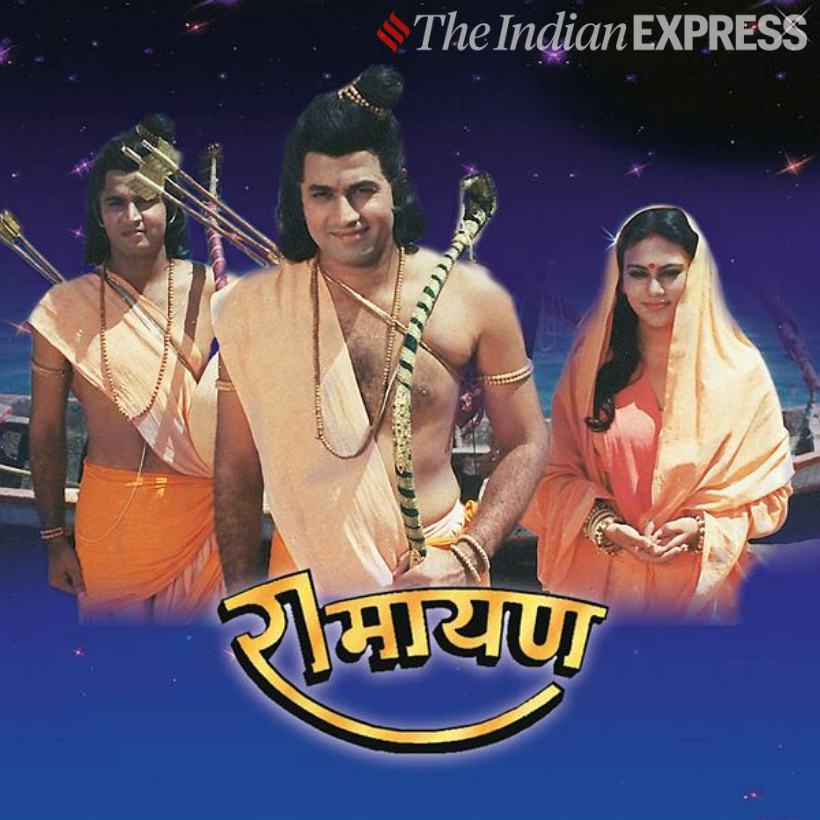 Ramanand Sagar’s epic will be back on Doordarshan from March 28 onwards.
Ramanand Sagar’s epic will be back on Doordarshan from March 28 onwards.
But jump into a time machine and head back 33 years and Ramayana was a craze. That’s the only word for it, truly. Even cricket match telecasts were sometimes interrupted to accommodate the series because of its popularity. And well, there were several instances of crowds surrounding electricity board offices when the power went off, making them lose out on a valuable episode of the series. Remember, in those days, you got to see an episode just once. There were no repeats later in the day or on other days. If you missed it, you were out.
In Allahabad, there was a gentleman who used to record every episode of the series on his video cassette recorder (a Panasonic he had got from Japan) and to make sure that there would be no cuts due to a power failure, he actually used to cut the mains supply and switch over to a generator (a Birla Yamaha portable genset) for the duration of the series. And I am sure he was not the only one. Some of my family would actually light agarbattis (incense sticks) and place flowers on the television when the series was on. And I am sure they were not the only ones either. If cellphones had been around, I am confident that the chiming bells that signalled the beginning of the series would have become a popular ringtone and caller tune!
Ramanand Sagar’s Ramayana was perhaps the first series to gain mass popularity on Indian television. It is not as if other series had not been popular – we had the likes of Hum Log, Buniyaad and Nukkad. But none of them had attained this level of popularity or aroused this level of passion. There are a number of theories as to why Ramayana was such a success. The most popular one is that it was the first time an Indian epic had been presented on such a large scale on television. The series was spread over a number of episodes and featured some well-known cinema stars at a time when Bollywood generally steered clear of television. Dara Singh, a wrestler and actor, was almost synonymous with Hanuman, the monkey god, a role he essayed here as well. Arun Govil, who played Lord Rama, and Vijay Arora who played Meghnaad, had both enjoyed decent stints on the silver screen and were known figures, albeit not superstars. Ramanand Sagar himself was a respected name in the Indian film industry, and had been involved in landmark films like Raj Kapoor’s Barsaat and Paigham, the first movie to star Dilip Kumar and Raj Kumar.
But perhaps more than the presence of all these worthies, it was the aura and respect that the Ramayana had in Indian hearts that accounted the most for its success, as well as the fact that television was largely a one channel affair (you only had Doordarshan).
Interestingly, most critics were scathing about the series. They panned its slow pace, the rather predictable dialogues, the acting (which varied from having a single predictable smile to hamming like no tomorrow), the rather shiny sets that sometimes seemed to be right out a school project with more than a hint of cardboard and glossy paper, and of course, the rather strange battle scenes where often two arrows stared at each other before one of them turned away (loser!). However, most viewers thought differently. For many of them, watching the Ramayana was almost like visiting a temple — a spiritual duty, where judgement was suspended. In many ways, it was like commercial cinema – critics panned it, but the masses were only too happy to lap it up. Significantly, the series’ success also opened the door for other Indian epics to make their way onto television – BR Chopra’s Mahabharata followed in 1988 and was a huge success as well.
Such was the popularity of the series that some of its actors went on to have political careers. Amit Trivedi who played Ravan, was elected to the Lok Sabha, and so was Deepika Chikhalia, who played Sita in the series. Arun Govil (Lord Ram) was also a prominent campaigner for the Congress Party in the 1988 Lok Sabha election from Allahabad, when VP Singh was seeking election. In fact, there is a line of thought that feels that the serial even played a key role in the revival of the fortunes of the Bhartiya Janata Party (BJP), as it suddenly brought Lord Rama back into popular consciousness, and may have boosted the Ram Janmabhoomi movement.
Since then, there have been other series based on Indian epics. But none have quite replicated the sort of popularity that Ramayana did. No, it was not perfect. But it was the first of its kind. And monumental in its impact. It might seem a little tacky by modern standards, but for many, it still is as important as ever, and a landmark in Indian television.
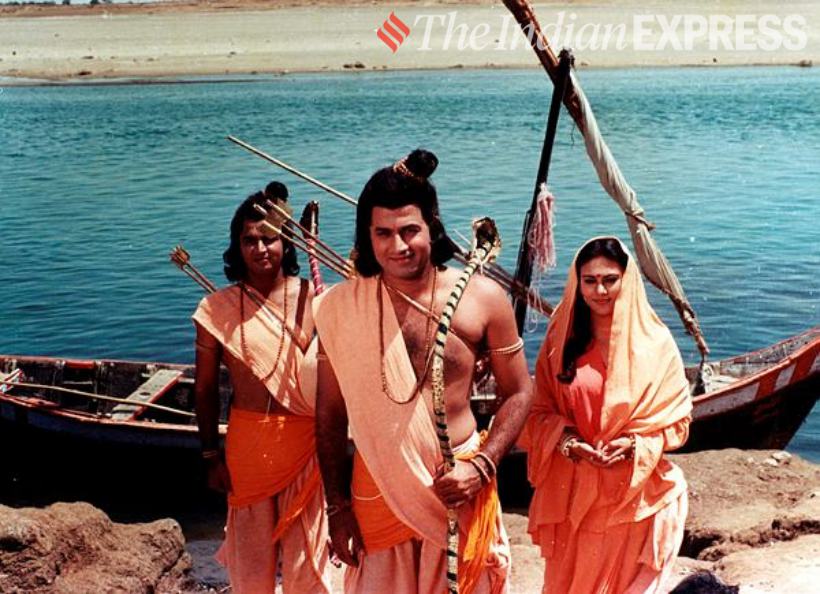 Ramanand Sagar’s Ramayana was perhaps the first series to gain mass popularity on Indian television.
Ramanand Sagar’s Ramayana was perhaps the first series to gain mass popularity on Indian television.
News of its being re-telecast has been welcomed by many. “This is the best news in the Lockdown – the REAL Lord Rama is coming on TV again,” one of my elderly relatives remarked when she heard the news.
If that does not tell you what Ramanand Sagar’s Ramayana meant to a generation of Indians, nothing well.


Photos
- 01
- 02
- 03
- 04
- 05
















